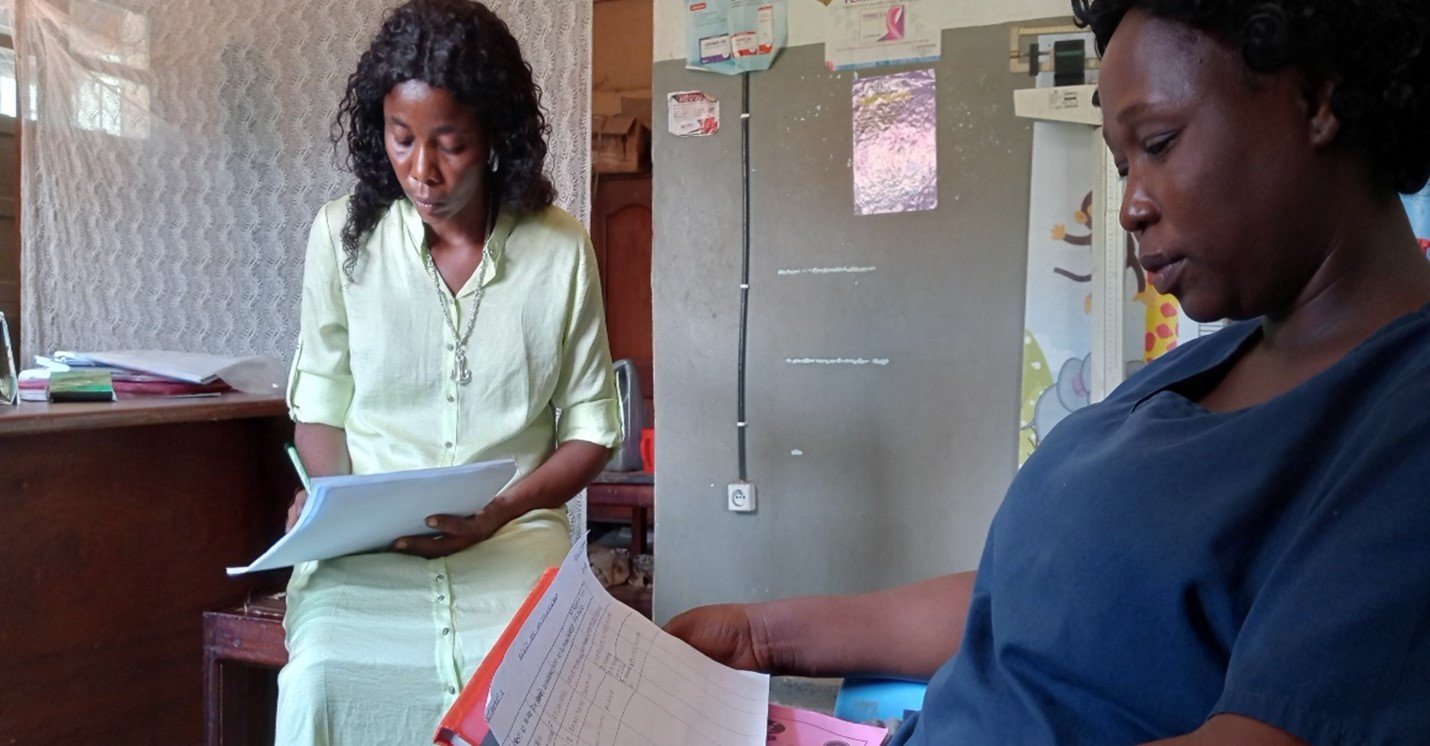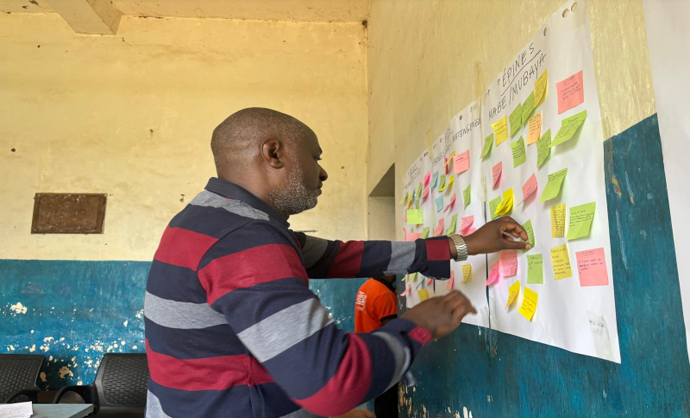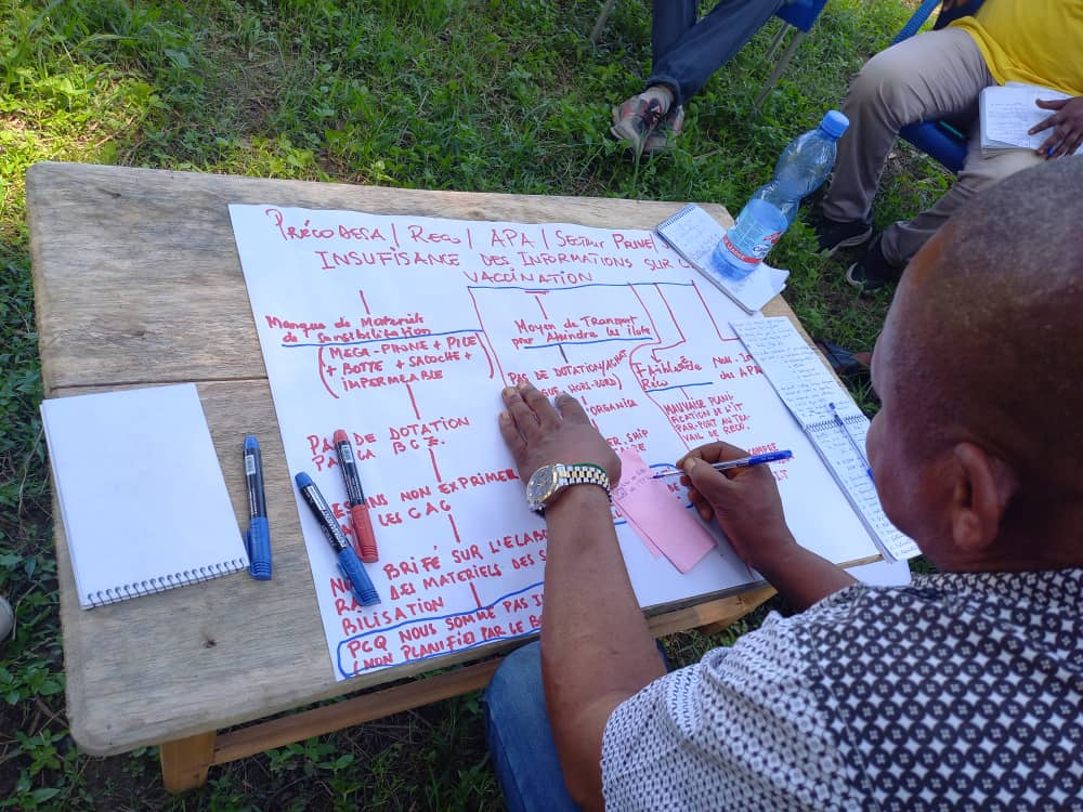Unlocking vaccine access through live birth lists
A simple yet powerful solution in the Democratic Republic of the Congo is helping ensure no newborn misses their first critical vaccines.
Human-centered design
Immunization
Extensive in-country reach
Agility and speed at scale

The challenge
In the Democratic Republic of the Congo (DRC), thousands of children are missing out on life-saving vaccines. Due to gaps in live birth registries, sometimes due to births at private clinics, some babies never make it onto official health system records. Without reliable birth data, health workers struggle to identify and reach newborns for critical early vaccinations. This results in what we refer to as zero-dose children, those who have not received a single dose of any routine vaccine.
The disconnect between birth records and vaccination schedules has created a persistent blind spot in immunization programs, particularly for families accessing care outside of the public health facilities.

PATH staff facilitating insight grouping at co-creation workshop in Isangi. Photo: PATH/Living Labs.
The approach
PATH’s Living Labs team, using a human-centered design (HCD) approach, set out to tackle this gap by working hand-in-hand with the people closest to the problem. They began with immersive interviews involving a wide range of stakeholders: health workers at both the zone and facility levels, community health workers (RECOs), private providers, parents of zero-dose children, and local leaders. These conversations illuminated not just logistical barriers but also deeper social and behavioral dynamics.
Armed with this insight, the team facilitated co-creation workshops and after-action reviews, allowing stakeholders to collaboratively design, test, and refine solutions. Each idea was stress-tested for its impact and feasibility, with stakeholders directly involved in shaping what would work best in their communities.

Completion of concept sheet by a stakeholder at a co-creation workshop in Isangi. Photo: PATH/Living Labs.
The solution
One solution quickly stood out for its simplicity and power: a process for the transmission of live birth lists from private facilities to mother-and-child health centers. By creating and sharing this list, children at private facilities would be accounted for to ensure they were up to date on vaccinations. Initially, the team focused on the main public health facility, Kilanga Centre de Sante.
By recording every birth and sharing it with the appropriate public health teams, health workers can plan vaccination sessions at key intervals, especially the critical six-week mark for administering Pentavalent 1, a combination vaccine that protects against five diseases in one shot: diphtheria, tetanus, pertussis (whooping cough), hepatitis B, and Haemophilus influenzae type b (Hib).
Private providers were coached on how to report births in real time, enabling smoother scheduling of vaccination sessions and preventing children from slipping through the cracks. Community health workers and leaders played a vital role in raising awareness among families, reinforcing the importance of early vaccination and building trust in the system.
The initial impact
This simple but transformative solution is already reshaping how children are tracked and served by the health system. With improved data on new births, health zones can more accurately determine their vaccine targets and schedule timely immunization sessions, particularly in private and hard-to-reach settings.
More importantly, it creates a sustainable bridge between where children are born and where they’re vaccinated, reducing missed opportunities and bringing more zero-dose children into the system from day one.
The Living Labs model continues to drive this work forward through ongoing monitoring, iteration, and shared learning. Local stakeholders are empowered to adapt and refine the approach, with regular feedback loops that ensure the solution remains responsive and effective.
As climate, conflict, and systemic challenges threaten to widen health gaps, solutions like this that are grounded in community voice and co-designed with users, offer a powerful path forward to ensure every child is counted, and every child is protected.